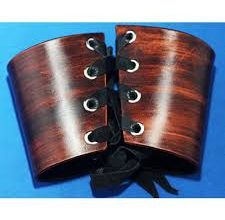The Accurate Eye

There is a beautiful Russian proverb: “It’s better to see once than hear a hundred times.” It is echoed by the wisdom of the East: “The taste of halva is better discussed with someone who has tried it.” Indeed, trying to express in words what a potential buyer needs to see for themselves is a rather thankless task. That’s how they think in a hunting shop – www.huntingshopfavia.com
For extended observations, professionals prefer to use instruments on tripods. A good spotting scope or powerful binoculars on a stable mount best meet the needs of observing distant, relatively immobile objects. Modern electronic technologies allow us to eliminate the “shaking effect,” making lightweight and compact binoculars almost as stable as stationary observation devices. However, such equipment has its obvious drawbacks: inconvenience in observing moving objects, limited mobility due to weight and size, and the need to find a suitable platform for setting up the device. Those who have experience with binoculars know well that the “shaking effect” appears with very high magnifications and prolonged observation. At some point, the binoculars become practically useless: the most powerful optics are helpless if we cannot physically keep the device steady on the chosen object. This is where the unique feature of image-stabilizing binoculars, which will be discussed in this article, comes into play.
Today, there are several methods of image stabilization. The first is the use of a gyroscope. This scheme is advantageous because it does not require power sources, is relatively simple and reliable, but it also has its downsides: binoculars with such a scheme are bulky, heavy, and more suitable for use in transportation. Binoculars with gyroscopes can be found in Nikon products and some domestic devices.
The next scheme is used in Canon binoculars. This image stabilization technology is based on the use of a so-called liquid prism, where the image displacement “follows” the binocular’s oscillations by changing the angle of the prism itself, the position of which is controlled by a special microprocessor. Prisms located in the binocular’s lenses can instantly change the angle of light refraction upon the command of its “electronic brain,” thus eliminating the shaking effect. Compared to image stabilization systems used in products from other manufacturers, this technology has several advantages. In particular, it can be applied in lightweight and compact binoculars suitable for constant carrying. Binoculars with liquid prisms are ready for use immediately after turning on and do not require additional time for the gyroscope to spin up. And finally, unlike mechanical stabilizers, the microprocessor of such binoculars provides an excellent image during slow movement of the observation line, whereas the “mechanics” will resist and cause “tangles” in the wiring due to random vibrations.
The only inconvenience in using liquid prisms is the need for a power source, i.e., batteries. In this case, one piece of advice is to remember to change the batteries in a timely manner. A high-quality lithium battery ensures continuous operation of the image stabilization system in Canon binoculars (depending on the device model) for up to 12 hours at an air temperature of +25°C. This time decreases with decreasing temperature, but even at -10°C, it will still be measured in hours.
Without batteries, these are classic binoculars without stabilization, still featuring excellent optical quality. Since binoculars with image stabilization are quite expensive, their manufacturers spare no expense on excellent lenses and the highest quality coating. In terms of optical quality, binoculars with image stabilization are at the top of manufacturers’ product lines.
Let’s briefly address one question. Sometimes people wonder why binoculars with image stabilization are so expensive, considering that today’s stabilization is available in almost every camera and even in the camera modules of some phones. The answer seems obvious: in binoculars, there are two independent stabilization systems that must work precisely and synchronously. Of course, this is true, but not the only reason. In cameras, physical image stabilization is practically not used; it is often software-based, meaning that the image is corrected not in the optical axis but directly on the camera’s sensor (given the current development of electronics, this is significantly cheaper). In a stabiloscope, the observer’s eyes play the role of the sensor, so all stabilization actions must be taken beforehand. In general, these systems only share the name and not much else.
Often, binoculars with image stabilization are housed in waterproof and dustproof cases, making them suitable for use in the most challenging weather conditions. And, importantly for those who have to move around on foot a lot, the weight of these binoculars without batteries starts from 1.2 kg, which today is almost equivalent to the weight of regular binoculars with similar characteristics.
These image-stabilizing binoculars cannot be called cheap; they cost as much as modern high-tech products should from companies with a global reputation, guaranteeing the highest quality and maximum satisfaction for the buyer.
By the way, it’s interesting to note that not everyone knows how to adjust binoculars “for themselves.” Let’s remind you how it’s done. Close your right eye and turn the central wheel to achieve the best image. Open your eye and close the left one, then adjust the right eyepiece of the binoculars for the best image. That’s it! Now, to refocus the binoculars on another object, you will only need to adjust the central wheel.
Binoculars with image stabilization cause immediate addiction. A person who starts using a stabiloscope is unlikely to want to go back to regular binoculars. The difference between them is noticeable right away. Looking through binoculars without stabilization provides an excellent image, good brightness, and a slight shimmer after 2-5 minutes of observation. Press the stabilization button, and everything changes instantly: the image seems brighter, lines are sharper, and the slight shimmer turns into slow rocking. Now you can easily read license plates on cars in the distance, see birds in the branches, which appear three-dimensional, and more. Release the button, and the world becomes duller and slightly blurry. Interestingly, when you turn off the stabilization, the color boundaries on people’s clothing seem to blend, and the colors acquire a somewhat dirty tint.
My impression of using binoculars with image stabilization is as follows. The binoculars delight with vibrant colors and a bright image. Among the particularly useful features, I discovered that bullet holes of caliber 5.6 mm can be seen at a distance of 150 m, which is almost unattainable for regular binoculars of any magnification without a tripod. Even very good regular optics look rather modest compared to optics with image stabilization in field conditions. Observing for an extended period with a regular binocular without a tripod is challenging, and interestingly, the harder you try to suppress vibration, the more pronounced it becomes.
What conclusions can be drawn? I think stabiloscopes are well-suited for observing nearby small-sized objects in stationary conditions (e.g., insects), but their main domain is large distances, moving objects, and an actively moving observer. Undoubtedly, such a device will be very useful for hunters, who, whether in the forest or mountains, suddenly spot an animal (or think they see one). Here, compensating for the trembling of tired hands, and perhaps legs, will be necessary.
What else would I like to add? Working with a stabilized binocular makes you recall the saying “You quickly get used to everything good.” Indeed, over time, image stabilization becomes a natural expectation, and transitioning to regular optics becomes very challenging.



